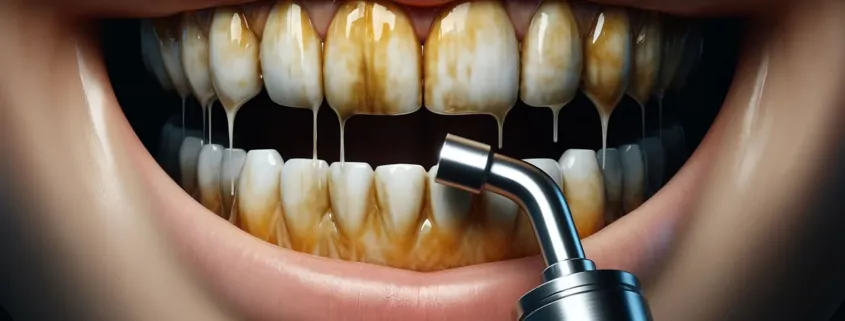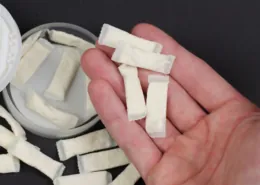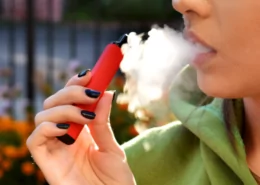Vaping Teeth Staining Nicotine Oral Health: Complete Guide
Vaping has become increasingly popular in recent years, with many people turning to e-cigarettes as an alternative to traditional smoking. While vaping is often marketed as a safer option, it’s not without its risks, particularly when it comes to oral health. One of the most common concerns among vapers is whether vaping can cause teeth staining. In this comprehensive article, we’ll explore the effects of vaping on teeth, the role of nicotine in discoloration, and provide expert tips for maintaining a healthy, white smile.
The Basics of Vaping and Its Impact on Oral Health
Vaping involves inhaling an aerosol produced by an electronic device, such as an e-cigarette or vape pen. The aerosol is created by heating a liquid (often called e-liquid or vape juice) that typically contains nicotine, flavorings, and other chemicals. When you vape, the aerosol comes into contact with your teeth and gums, and some of the chemicals in the e-liquid can cause staining or discoloration over time.
According to a study published in the Journal of the American Dental Association, “Electronic cigarette aerosol contains nicotine, propylene glycol, glycerin, flavorings, and other chemicals that can have negative effects on oral health” (Froum & Neymark, 2019). These chemicals can contribute to a variety of oral health issues, including:
- Dry mouth: Propylene glycol, a common ingredient in e-liquids, can reduce saliva production, leading to dry mouth. This condition increases the risk of tooth decay and gum disease.
- Tooth enamel erosion: Some e-liquid flavorings contain acids that can erode tooth enamel, making teeth more susceptible to decay and sensitivity.
- Gum inflammation: The nicotine in vaping products can reduce blood flow to the gums, potentially leading to gum inflammation and disease.
- Teeth staining: Nicotine and other chemicals in e-liquids can cause teeth to yellow or brown over time, particularly for heavy vapers or those who use high-nicotine products.
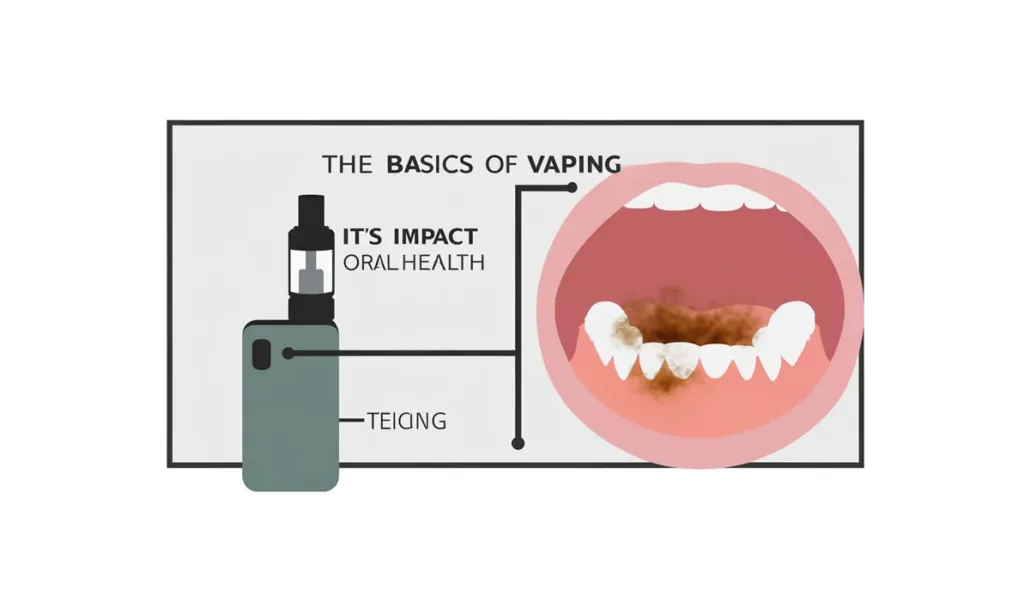
The Role of Nicotine in Teeth Staining
Nicotine, the addictive substance found in most vaping products, is the primary culprit when it comes to teeth staining. Nicotine is naturally yellow in color and can leave stains on your teeth when it comes into contact with them. Heavy vapers or those who use high-nicotine e-liquids are more likely to experience significant teeth staining.
A study published in the journal Nicotine & Tobacco Research found that vapers were more likely to have yellow or brown stains on their teeth compared to non-smokers (Wadia et al., 2021). While vaping may not cause as much staining as traditional smoking, it can still contribute to discoloration over time.
The American Dental Association (ADA) warns that “nicotine and other chemicals in e-cigarettes can stain teeth” and recommends that vapers practice good oral hygiene and consider quitting to reduce the risk of teeth staining and other oral health issues (ADA, 2022).
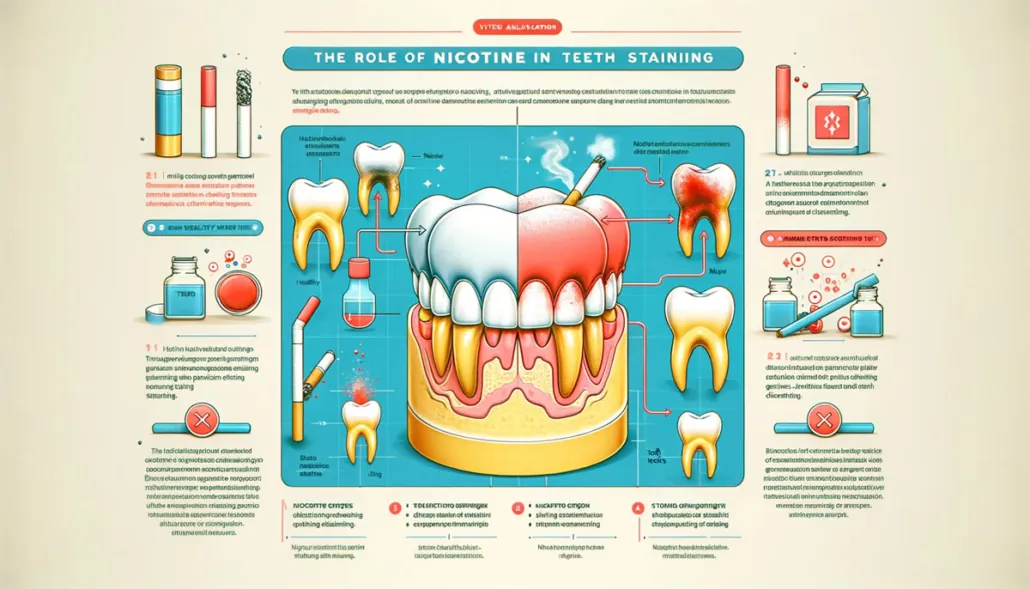
Vaping vs. Traditional Smoking: Comparing the Effects on Oral Health
When comparing the effects of vaping and traditional smoking on oral health, it’s important to consider several factors:
- Staining: Both vaping and smoking can cause teeth staining, although vaping may not cause as much discoloration as smoking. A 2020 study published in the Journal of Prosthetic Dentistry found that “e-cigarette aerosol caused less staining than conventional cigarette smoke” but still resulted in noticeable discoloration (Pintado-Palomino et al., 2020).
- Tooth decay: While smoking is known to increase the risk of tooth decay and gum disease, vaping may not have the same level of risk. However, the nicotine in vaping products can still contribute to tooth decay by reducing saliva production and increasing bacteria growth. A 2021 systematic review published in the Journal of Oral Pathology & Medicine concluded that “e-cigarette use is associated with an increased risk of dental caries” (Yang et al., 2021).
- Bad breath: Both vaping and smoking can lead to bad breath due to the nicotine drying out your mouth and leaving behind strong odors. A 2019 study published in the Journal of Periodontology found that “e-cigarette users had significantly higher levels of volatile sulfur compounds (VSCs), which are associated with halitosis, compared to non-smokers” (ALHarthi et al., 2019).
Although vaping may be less harmful to your oral health than traditional smoking, it’s crucial to maintain good oral hygiene habits to keep your teeth and gums healthy.
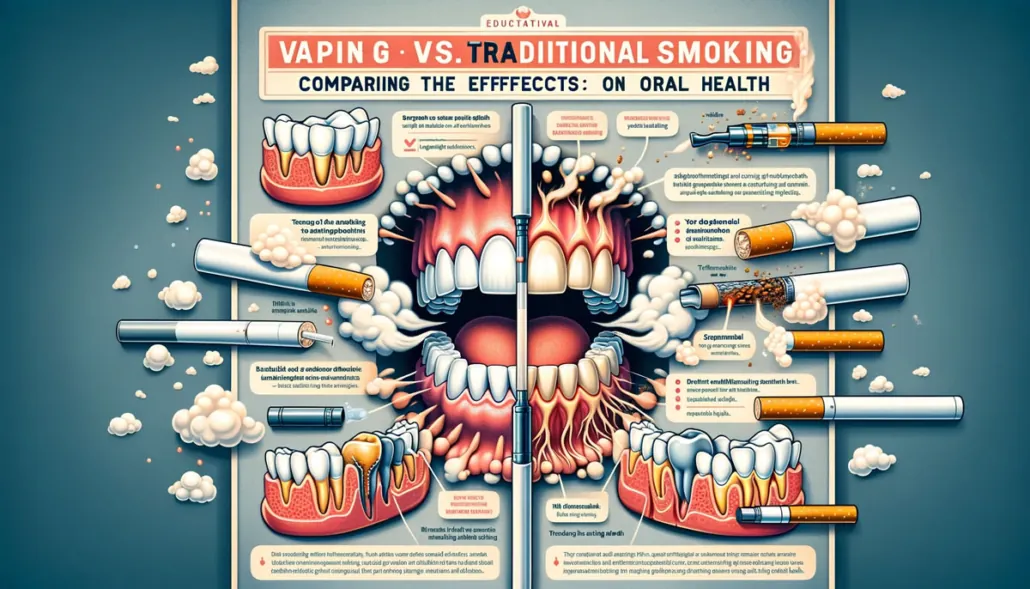
Preventing and Treating Stains from Vaping
If you’re a vaper concerned about teeth staining, there are several steps you can take to prevent and treat discoloration:
Oral Hygiene Practices
- Brush your teeth at least twice a day with fluoride toothpaste and floss once a day to remove plaque and prevent staining.
- Use a whitening toothpaste to help remove surface stains and maintain a brighter smile. Look for toothpastes with the ADA Seal of Acceptance, which indicates they are safe and effective for whitening.
- Rinse your mouth with water after vaping to wash away any residue and reduce the risk of staining.
- Chew sugar-free gum to stimulate saliva production, which helps neutralize acid and prevent tooth decay. Choose gum with xylitol, a natural sweetener that has been shown to reduce the risk of cavities.
- Avoid dark-colored beverages, such as coffee, tea, and red wine, which can contribute to staining. If you do consume these beverages, rinse your mouth with water afterward.
Professional Dental Care
If you already have stains on your teeth, consider professional dental care to remove them:
- Professional teeth cleaning: A dental hygienist can use special tools to remove surface stains and polish your teeth, leaving them looking cleaner and brighter. The American Dental Association recommends getting a professional cleaning at least twice a year.
- Teeth whitening: Your dentist can use a bleaching agent to lighten the color of your teeth and remove stains. In-office whitening treatments are typically more effective than over-the-counter products, as they use stronger bleaching agents and can be customized to your needs.
- Dental bonding: For more severe staining, your dentist may recommend dental bonding, which involves applying a tooth-colored resin to improve the appearance of your teeth. Bonding can also be used to repair chipped or cracked teeth, making it a versatile option for improving your smile.
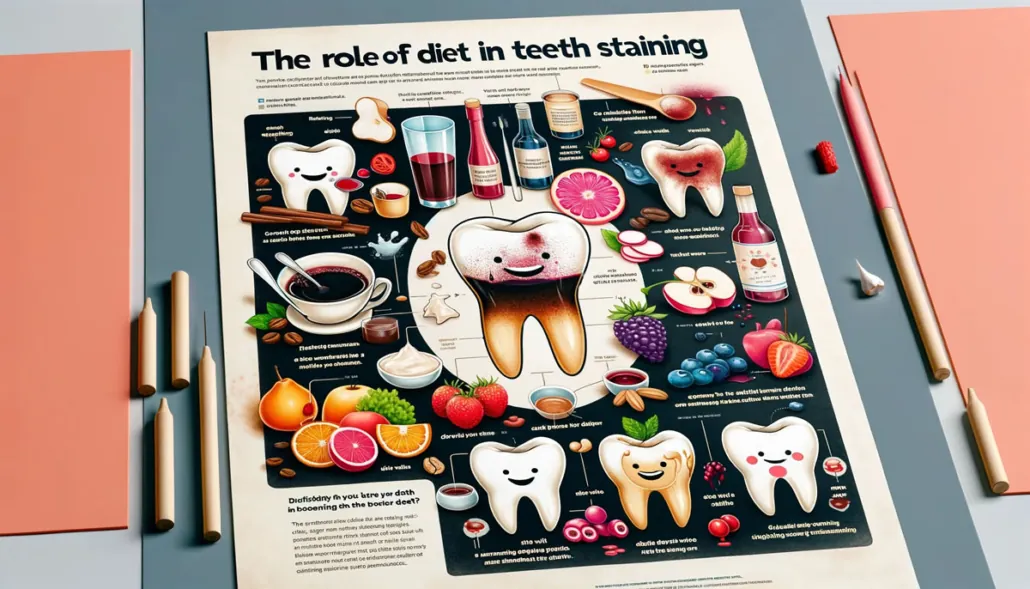
The Role of Diet in Teeth Staining
Your diet also plays a significant role in the overall health and appearance of your teeth. Certain foods and drinks can cause teeth staining, while others can help keep your teeth white and healthy.
Foods and Drinks to Avoid
- Coffee and tea: These beverages contain tannins that can cause yellowing and staining over time. If you can’t give them up entirely, try drinking through a straw to minimize contact with your teeth.
- Red wine: The chromogens in red wine can stain teeth, particularly if consumed frequently. Opt for white wine or rinse your mouth with water after drinking red wine to reduce the risk of staining.
- Dark-colored fruits and vegetables: Berries, beets, and other dark-colored produce contain high levels of pigments that can stain teeth. While these foods are nutritious, be sure to rinse your mouth or brush your teeth after consuming them.
- Soda and sports drinks: These beverages are high in sugar and acid, which can erode tooth enamel and make teeth more susceptible to staining. Limit your intake of these drinks and choose water or unsweetened tea instead.
Teeth-Friendly Foods
- Water: Drinking water helps wash away food particles and bacteria, preventing tooth decay and staining. It also helps keep your mouth hydrated, reducing the risk of dry mouth and other oral health issues.
- Milk and dairy products: These foods are rich in calcium, which is essential for strong teeth and bones. They also help neutralize acid in the mouth, reducing the risk of tooth decay.
- Crunchy fruits and vegetables: Apples, carrots, celery, and other crunchy produce can help scrub away plaque and surface stains, keeping your teeth looking cleaner and brighter.
- Strawberries: These berries contain malic acid, a natural enzyme that can help whiten teeth. Mash a few strawberries and mix with baking soda to create a natural whitening paste, or simply eat them as a snack to enjoy their teeth-friendly benefits.
Conclusion
While vaping may be less harmful than traditional smoking, it can still have negative effects on your oral health, including teeth staining. By understanding the chemicals in vaping products, the role of nicotine in discoloration, and the importance of good oral hygiene and a balanced diet, you can take steps to prevent and treat stains caused by vaping.
Remember, the best way to maintain a healthy, white smile is to quit vaping altogether. However, if you choose to continue vaping, be sure to practice good oral hygiene, visit your dentist regularly, and consider professional treatments to remove any existing stains.
If you’re concerned about the impact of vaping on your oral health, talk to your dentist. They can provide personalized advice and recommendations based on your individual needs and help you develop a plan to protect your smile.
References:
ALHarthi, S. S., BinShabaib, M., Akram, Z., Rahman, I., Romanos, G. E., & Javed, F. (2019). Impact of cigarette smoking and vaping on the outcome of full-mouth ultrasonic scaling among patients with gingival inflammation: a prospective study. Clinical Oral Investigations, 23(6), 2751-2758. https://doi.org/10.1007/s00784-018-2725-2
American Dental Association. (2022). Smoking and Tobacco: Oral Health Topics. https://www.ada.org/en/member-center/oral-health-topics/smoking-and-tobacco
Froum, S. J., & Neymark, A. (2019). Vaping and oral health: It’s worse than you think. Journal of the American Dental Association, 150(7), 575-577. https://doi.org/10.1016/j.adaj.2019.05.001
Pintado-Palomino, K., Braga, R. J., Dantas-Batista, L. M., Zaccara, I. M., Matos-Santana, T. E., & Oliveira-Santos, C. (2020). Effects of electronic cigarettes and conventional cigarettes on the color stability of dental restorative materials. Journal of Prosthetic Dentistry, 124(3), 388-393. https://doi.org/10.1016/j.prosdent.2019.09.024
Wadia, R., Booth, V., Yap, H. F., & Moyes, D. L. (2021). Oral health effects of electronic cigarettes and other electronic nicotine delivery systems: A systematic review. Journal of Oral Pathology & Medicine, 50(1), 15-31. https://doi.org/10.1111/jop.13061
Yang, I., Sandeep, S., & Rodriguez, J. (2021). The oral health impact of electronic cigarette use: a systematic review. Critical Reviews in Toxicology, 51(2), 97-107. https://doi.org/10.1080/10408444.2020.1855955
- Bestselling Vapes in UK After Disposable Ban: What to Stock 2025 - August 8, 2025
- Argentina Debates Stricter Vape Laws Amid Prohibition Failures - August 8, 2025
- Nigeria Advocacy Group Urged to Hike Tobacco & Vape Tax by 100% - August 8, 2025

